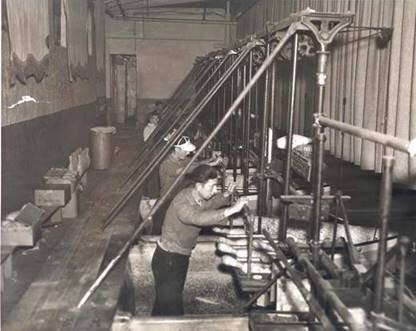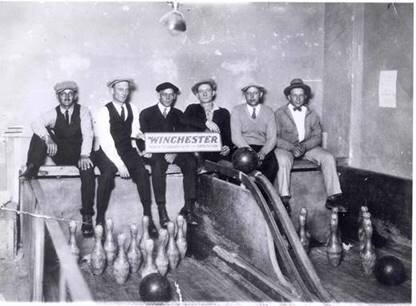The Way We Work(ed): Pinsetters
Bowling alleys, in discussing old and new jobs and the evolution of work, are no strangers to the impact changing technology has held on our work environments.
Jack Short photo, c. 1950.
The photo to the right shows bowlers at the bowling alley that is now called Hi-Way Recreation. It was the opening day of the lanes and both men and women are playing - note the crowd of onlookers at the back of the photo.
At the time, bowling pins had to be reset by pinsetters or pinboys who were behind the scenes replacing the pins and returning the balls. Today, machines do this work.
In bowling, a pinsetter, or pin spotter, was originally a person who manually reset bowling pins to their correct position, cleared fallen pins, and returned bowling balls to players. Probably due to the nature of the work (low-paid, often part-time manual labor that most frequently took place evenings), many pinsetters were teenage boys, and thus pinboy is another name used to describe the job.
In 1936 Gottfried Schmidt invented the mechanical pinsetter while with the AMF firm, which largely did away with pin setting as a manual profession, although a small number of bowling alleys still use human pinsetters.
Bowling Pins, as seen on display within the exhibition, The Way We Work(ed).
While humans usually no longer set the pins, a pinchaser, or in slang a ‘pin monkey,’ is often stationed near the equipment to ensure that it is clean and working properly, and to clear minor jams.
In The Way We Work(Ed), using bowling pins to contrast between old and new jobs helps us to better understand the nature of work and how work environments, in their most basic state, are bound to evolve. The job of pinsetters illuminates this phenomenon, demonstrating how technological advances and alterations in machinery impact the way we work, who works, and why.







